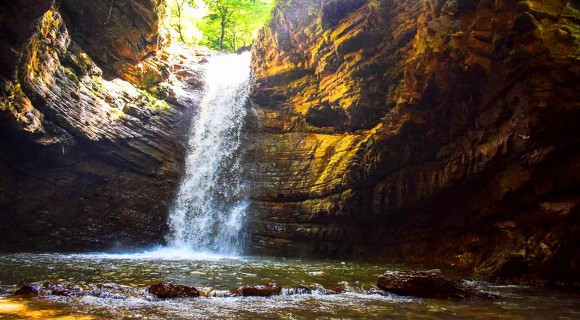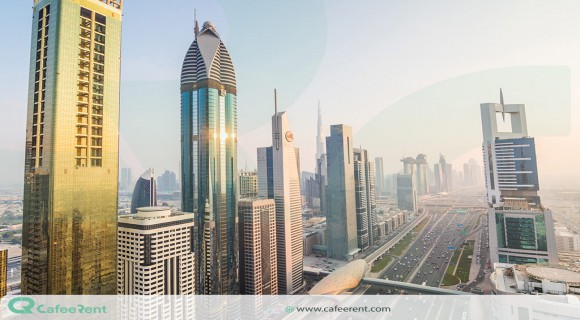Palace of Golestan

A prime example of the Qajar era's masterful fusion of traditional Persian arts and architecture with Western influences is the opulent Golestan Palace.
The Qajar family, who came to power in 1779 and established Teheran as the nation's capital, established their seat of government in the walled Palace, one of Teheran's oldest groups of structures.
The Palace's most distinguishing elements and lavish ornamentation date from the 19th century and are built around a garden with pools and cultivated areas.
It developed into a hub for Qajari arts and architecture, of which it is an exceptional example, and it continues to this day to serve as a source of inspiration for Iranian artists and architects.
It embodies a fresh aesthetic that combines traditional Persian handicrafts with inventions from the 18th century in terms of architecture and technology.
Tehran's Golestan Palace's past
Golestan Palace's history may be traced back to the years 1588 to 1629, according to historical records and travelogues; nonetheless, the Qajar era is this palace's most significant historical era (1789-1925).
Agha Mohamad Khan Qajar was crowned in 1789 and chose Tehran as his capital after conquering Lotf Ali Khan Zand; this decision gave the royal castle of Golestan added significance.
Shah Abbas Safavid's royal castle originally stood where is now known as the Golestan Heritage Museum Palace (r. 1588 – 1629).
Tehran was then merely a small settlement close to the ancient city of Rey.
Due to its good temperature and closeness to what were regarded as summer resorts, Shemiranat and Lavasan, Tehran was given special treatment by the Safavid kings in the beginning.
In Tehran, a castle that was encircled by plane trees was created in this way.
After the Safavid and Afshari eras came to an end, during the Zand period, this structure was occasionally utilized by a king named Karim Khan, and a part was constructed to it that is now known as Khalvat-e Karim Khani, or Karim Khani Nook. Tehran was chosen as Iran's capital after Agha Mohammad Khan came to power and the Qajar dynasty was established.
The rulers' principal residence during this time was the royal citadel. Each of the Qajar kings' coronation and condolence ceremonies were held here.
Qajar Agha Mohammad Khan

The Iranian dynasty of the Qajar was established by Agha Mohammad Khan Qajar, who lived from 14 March 1742 to 17 June 1797.
Agha Mohammad Khan, who was formerly the chief of the Qoyunlu branch of the Qajar tribe, was crowned king of Iran in 1789 and reigned until 1797. In 1794, he overthrew Lotf Ali Khan, a member of the Zand dynasty.
Famously known as the Eunuch Monarch, Agha Mohammad Khan Qajar was castrated as a young adult after being captured by Adel Shah Afshar, leaving him childless.
On June 17, 1797, he was murdered, and his nephew, Fath-Ali Shah Qajar, took his place.
During Agha Mohammad Khan's rule, Iran was once again centralized and unified, and the capital was moved to Tehran, where it is still located today.
He is also known for acting in a cruel and rapacious manner, especially when Georgia was being re-subjugated. He took over Tbilisi's capital, massacred a large portion of its populace, and transported 15,000 Georgian prisoners back to Iran's interior.
Locations of Golestan Palace
Golestan Palace was renovated over the course of about 400 years to arrive in its current condition.
The complex consists of 17 buildings, the majority of which were constructed during the 131 years of Qajar rule and include palaces, museums, and halls.
Numerous events, including coronations, celebrations, rituals, and habitation took place in these palaces. The complex also includes three main archives, including the library of manuscripts, the document archive, and the photographic archive. The current size of Golestan Palace is 4.5 hectares, or one-tenth of its original area.
1- Marble Throne Terrace
This magnificent terrace, sometimes referred to as the Marble Throne Terrace, was constructed during the reign of Agha Mohammad Khan, who was crowned here.
It is also said that some components of this structure have a longer lifespan than Golestan Palace. During the Qajar era, kings used to welcome governors in this place and met ordinary people during the Nowruz holidays.
The throne terrace embodies the best of Iranian architecture with its murals, marble carvings, tile work, stucco, mirrors, enamel, wood carvings, and lattice windows.
The coronation and Nowruz greetings of the Qajar rulers continued to take place in this structure. Reza Pahlavi's coronation in December 1925, following the foundation of his new country, was the last ceremony to be conducted here.
2- Shams ol-Emareh

The Golestan Palace complex is a fantastic location to get a sense of Iranian architecture from the Zand era to the present.
The addition of various structures over time, particularly during the Qajar era, created a distinctive Imperial palace that inspires us to visit it today.
The Shams ol-Emareh mansion, also known as "The Edifice of the Sun," is one of the many buildings in Golestan and is regarded as the palace's most stunning building because of its extraordinary glory.
Naser al-Din Shah, the fourth ruler of the Qajar Dynasty, considered constructing a palace in his capital to rival the "l Qp" in Isfahan before his trip to Europe.
A tall structure from which he could stand on the roof and see the entire capital city.
He gave the order for the Shams ol-Emareh structure to be started in 1865 and completed in 1867. This structure blends traditional Iranian and Western architectural styles.
The first metal-framed building in Iran was Shams ol-Emareh, though metal buildings are becoming more prevalent. As previously mentioned, this five-story palace, which is about 35 meters high, was the tallest structure in Tehran at the time.
This building has a variety of halls and rooms, each serving a unique purpose. As soon as you walk in, their beauty and decorations catch your eye.
These halls and rooms, which included dining halls, bed chambers, banquet halls, tea rooms, balconies, and areas for entertaining the king's guests, were used on various occasions.
The mansion's top floor, known as the "Royal Seat," is one of its most significant features. Nasser al-Din Shah was intended to use this location to sit and enjoy a 360-degree view of Tehran while overlooking the city from all four sides.
Shams ol-Emareh has several stories, although visitors are only permitted to the ground floor of the building.
To keep the structure in good condition and eliminate some risks.
3- Karim Khani Nook
This terrace was originally a part of Karim Khan's internal home, which served as the foundation for the Zand dynasty.
The Karim Khani Nook, which dates from 1759, has a fundamental structure with the Marble Throne terrace.
In this porch, which has less adornment than the other one, there is also a little marble throne.
This terrace previously featured a small pond in the center with a fountain.
The king's qanat, a subterranean stream, poured into the pond from the fountain and was later used to water the palace grounds.
The tombstone of Naser al-Din Shah is one of the priceless works of art that can be found in this area of Golestan Palace.
This stone is constructed of solid marble and was made after the assassination of the king in 1896.
After the Islamic Revolution, this tombstone—which was originally erected on Naser al-Din Shah's grave in the city of Rey—was moved to Golestan Palace.
4- Salam Hall

The Salam Hall, Museum Hall, or Coronation Hall is situated in the main center area of Golestan Palace, which was designed with the intention of establishing a museum from the outset.
Nasser al-Din Shah made the decision to construct a similar museum at this royal residence after seeing museums in Western nations.
In this manner, the Salam Hall was constructed in place of the existing structures that once stood in this area of the garden.
Thus, in this hall, Iran's first museum was established and used to display European and Iranian paintings together with gifts given to the Iranian royal.
Additionally, several royal treasures were displayed in glass cases.
It was once known as the Salam Hall since the Salam ritual was also held there, and later it became known as the Coronation Hall because that is where the Pahlavi kings were crowned.
5-Golestan Palace Mirror Hall (Talar-e Ayneh)
The Mirror Hall is the most well-known of the Golestan Palace's halls. This hall's construction took three years, beginning in 1874.
But it took about 4 years to complete the decoration and mirror work, and the building was finally finished in 1881.
This hall's attractiveness has been enhanced by the employment of a really lovely mirrorwork.
Iranian original architecture and art served as inspiration for the hall's interior design.
This hall's walls are embellished with handcrafted, colorful mirrors.
Iranian artists created and produced each and every one of the colourful mirrors utilized in the hall.
6-Ivory Hall (Talar-e Adj)

Ivory Hall is a sizable room where meals are served.
This edifice, which dates to the reign of Nasser al-Din Shah, was undoubtedly constructed before Salam Hall and Mirror Hall, but later in his reign, its facade was altered to blend in with the other two halls.
It was embellished with several items that European kings had given to Nasser ed-Din Shah.
Major internal improvements were made to the Ivory Hall because it served as the location for court receptions and official parties throughout the Pahlavi era.
7-Dimond Hall (Talar-e Almas)
On the southern side of the Golestan Palace, next to the wind tower building, is where you'll find the Almas Hall.
Because of the remarkable mirror work inside the structure, it is known as Talar e Almas ("the Diamond Hall").
Currently, the Diamond Hall serves as a museum.
This hall was built during the reign of Fath Ali Shah (r. 1797–1834), and it currently houses an exhibition of sculptures and paintings from that time.
8-The Edifice of Wind Tower (Emarat-e Badgir)
The Emarat-e Badgir, also known as the Edifice of Wind Tower, is the third-oldest structure in Golestan Palace and was built during the rule of Fath Ali Shah.
Nasser-al Din Shah oversaw extensive improvements to this building, including structural alterations.
The tall wind towers that allow the cooling wind to flow through the building are where the name of the construction comes from.
9- Abyaz Palace – The Museum of Anthropology

Nasser al-Din Shah's rule came to an end, and Sultan Abdul Hamid of the Ottoman Empire presented some fine and priceless furniture, including a few Louis XVI living room sets, Sculptures made of gold and bronze, velvet drapes, and a few fragments of Turkish carpet.
Nasser al-Din Shah decided to build a new structure at the southwest corner of Golestan area, to house the gifts of the sultan, because at that time almost all the royal palaces and halls were filled with numerous objects, such as paintings and furniture, and there was no place to present and install them.
According to legend, Nasser al-Din Shah personally planned the new palace and determined the size of the great hall using the width and length of the greatest carpet the Sultan possessed.
As a result of the façade's whiteness, which was plastered and adorned in the manner of 18th-century European palaces, and the white and streaked marble used for the steps and steps of the palace hall, the structure came to be known as the "Abyaz Palace," or white palace.
Nasser al-Din Shah authorized the installation of a vast carpet from the Ottoman Sultan as well as some oversized pictures of European kings and queens that had been presented to Iran as gifts during their visits to Persia after the building had been completed.
The cabinet sessions were held in the Abyaz Hall, and the prime ministers of following governments also built their own government headquarters there.
conclusion
It is important to note that this stunning location was constructed in Iran's capital, which means that in addition to visiting Iran's historical sites in various locations, you may also visit them in Tehran.
Visit the https://cafeerent.com/tourism website to learn how to go to these places and the nation's capital while having fun with a rental automobile.







Add Comment